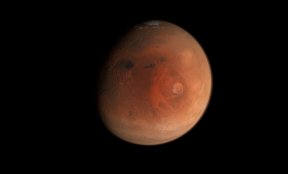Dark energy – the stuff causing the Universe to expand at an accelerating rate – makes up about 68% of the Universe. It's thought to be a cosmological constant, a single value of something like \(10^{-52}\) \(\mathrm{m^{-2}}\), and it's baked right into our best model of the Universe1. But outside of that, insert the usual disclaimer here, we know very little about it. Not through lack of trying though.
There's an instrument called the Dark Energy Spectroscopic Instrument (DESI) which is currently being used to collect data that might help us understand more about what dark energy actually is. It's mounted on the 4 metre Mayall telescope at the Kitt Peak National Observatory in Arizona and is the key component in an active survey that has so far covered nearly 15 million galaxies and quasars. The redshift data that it has been collecting is being used to produce the largest ever 3D map of the Universe.
Creating this map gives researchers the ability to look directly at the expansion history of the Universe over about the last 11 billion years. They can then compare this with what the models say they should be seeing, and as it turns out, things look more or less like what we expected.
But that's not the end of the story. In addition to looking at a big three-dimensional map of the Universe, we can also use data from the cosmic microwave background, supernovae, and other phenomena to understand how the Universe has changed over time. And when all the data is taken together, inconsistencies start to pop up. To the extent that the cosmological constant doesn't appear to be so constant after all.
There are hints in the results that show that dark energy is evolving. It might be weakening over time. That would mean that the expansion of the Universe is slowing down, and that doesn't fit with our theoretical models. But the Universe is under no obligation to function in the way we think it does.
The results haven't yet reached the gold standard 5-sigma that represents the threshold for a discovery in physics, but we are getting closer. The new and nearly commissioned Rubin Observatory is going to have a big say in where the theory goes from here, and these results suggest that things might get rather exciting. Unless you prefer everything to stay constant, that is.
-
The ΛCDM model. ↩



